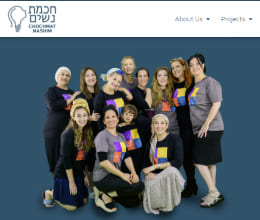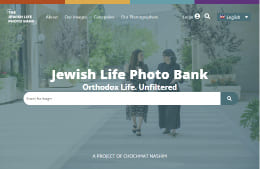Originally published in the Jewish Chronicle
They say that hospitals and auto-repair shops are the great equalisers of Israeli society, where you’ll find Israelis of all stripes working side by side, as a team with common goals. Having spent the past few days with my dad in a Jerusalem hospital (and having taken my car too often to the shop), I can confirm this is true.
In the ER, to one side of us, two nurses tried to coax an elderly woman into taking her medication: one spoke Arabic, the other Hebrew. To the other side, a man screamed (very colourfully) in Spanish at the woman trying to help him move.
The team of doctors who came by to check on us included men, women, Jews and Arabs. Nurses, Liat and Mahmood, provided excellent care. The patients, too, represented a wide variety of Israeli residents, Strictly Orthodox, Ethiopian, native Israelis and us, Anglo olim.
It is hard to understand, then, why outside these walls Israeli society is much more divided along demographic lines.
Some reasons are innocuous. People made aliyah together in groups at different times and were often housed in communities. Moroccans with Moroccans beside Persians and Tunisians. Russians with Russians. Ethiopians with Ethiopians, and of course they were not moved into Arab neighbourhoods.
Given that schools are local, children don’t have much opportunity to meet those from outside of their neighbourhoods, though in cities such as Tel Aviv, Russians live next to Moroccans live next to Yemenites etc, and in cities like Haifa, Arab Israelis, too.
Arabs make up more than 41 per cent of the student body in Haifa University and 22.2 percent at the Technion Israel Institute of Technology
And, yet, while the Arab population of Jerusalem is just under 40 per cent, their portion of the student body at Hebrew University is 12 per cent. In Jerusalem, the physical divide between Jewish and Arab districts is stark. The history, division and spread of the city — as well as decades of a hands-off approach by the Israeli government— has resulted in neighbourhoods where Arab residents do not speak Hebrew and where a vacuum of authority has made room for anti-Israel groups to operate.
In the summers, this means day camps paid for by the Palestinian Authority, which teach incitement against Israel. Recently, the Israeli government has woken up to the need for improved services and infrastructure in Arab neighbourhoods, allocating two billion shekels over the next five years.
Most of this will be used for the education system where the drop-out rate is over 40 per cent but, already, new playgrounds and improved streets can be seen.
It is not only the government that is paying more attention, NGOs seeking to make the present better even while the future of the city is yet to be determined, have become active in East Jerusalem.
Magen David Adom just completed its first course for paramedics in Shuafat, an Arab neighbourhood straddling the security barrier, best known for its refugee camp. One thousand residents enjoyed festivities sponsored by the municipality near the new community police building, with two of the most “right wing” city council members taking an active part in the closing ceremony.
The Institute for Zionist Strategies also holds programmes in East Jerusalem, focusing on ways to help residents integrate. Hebrew courses for women and the youth enable them to travel, seek employment, and feel more connected to the wider city. A rights centre in Sur Baher, run in conjunction with local Arab community leaders, assists residents with such tasks as paying bills, applying for discounts and registering for kindergarten.
Asked why a Zionist organisation would spend money and resources in an Arab neighbourhood, its director Miri Shalem says: “We believe that everyone under Israeli sovereignty should have full access to what this country has to offer. We share this city. Our futures are linked.”
It seems to me that what hospitals, garages, and these programmes share is a focus on the current need, the here and now. The aim is clear and not dependent on politics.
Focusing on the task at hand, the immediate goals and needs, might just solve the unsolvable. The little gestures, the one-on-one humanity, the people helping people, might be what we need bring the monster that it is the Israel-Arab conflict to its knees.


